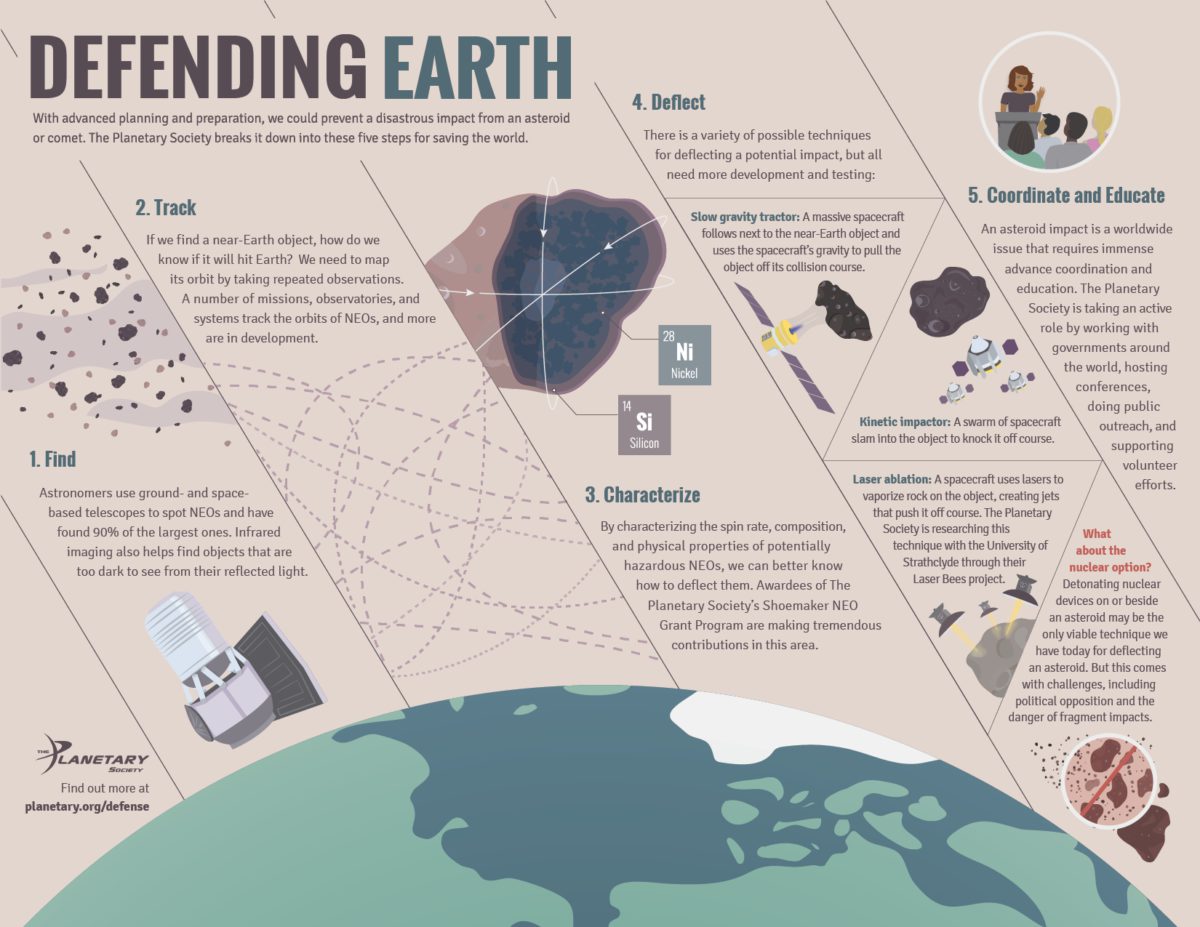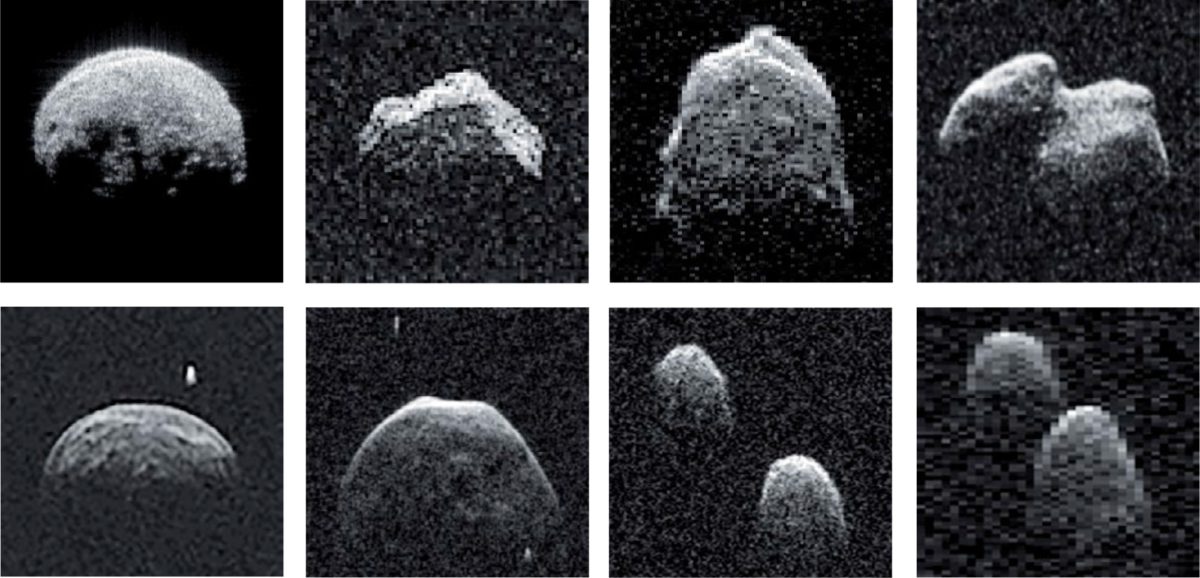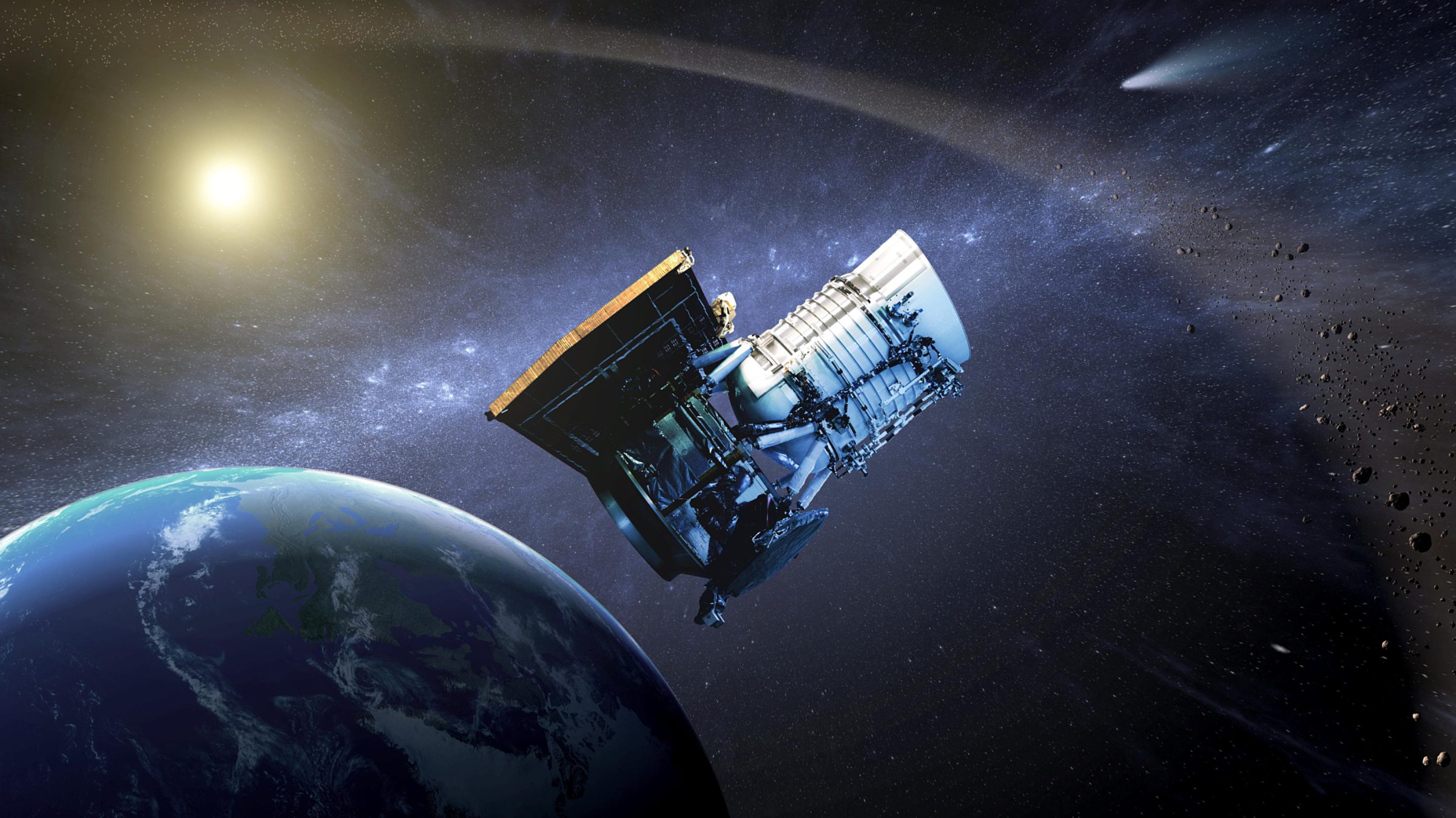Planetary Radio • Oct 02, 2019
How to Defend Your Planet
On This Episode

Vishnu Reddy
Associate Professor for University of Arizona

Bruce Betts
Chief Scientist / LightSail Program Manager for The Planetary Society

Mat Kaplan
Senior Communications Adviser and former Host of Planetary Radio for The Planetary Society
Planetary scientist Vishnu Reddy studies space objects ranging from satellite debris to planet-killing asteroids. He shares the status of our effort to avoid the fate of the dinosaurs in a conversation with host Mat Kaplan. Did you know fruit flies were first in space? That’s just one of the random space facts you’ll absorb in this week’s What’s Up segment with Bruce.


- The State of Planetary Defense
- Planetary Defense Project Page
- Asteroid Defense 101
- The Reddy Research Group at the University of Arizona Lunar and Planetary Lab
- NASA to Build New Asteroid-Hunting Space Telescope
- Animals in Space
This week's prizes:
A gorgeous Planetary Radio t-shirt from ChopShop, and a 200-point iTelescope.net astronomy account.
This week's question:
What spacecraft are ACTIVE on the Moon’s surface?
To submit your answer:
Complete the contest entry form at http://planetary.org/radiocontest or write to us at [email protected] no later than Wednesday, October 9th at 8am Pacific Time. Be sure to include your name and mailing address.
Last week's question:
Where in the solar system is the crater named Hamlet?
Winner:
The winner will be revealed next week.
Question from the September 18 space trivia contest:
Name your three favorite Milky Way satellite galaxies. There’s no single correct answer.
Answer:
Oh, there are too many Milky Way satellite galaxies to name here!
Transcript
NOTE: This automated transcript is currently being edited by a human. Check back soon for updates.
[00:00:00] Defending Earth this week on planetary radio.
Welcome. I'm at Kaplan of the planetary Society with more of the Human Adventure across our solar system and beyond. I was between trips as I assemble. This week's show you'll soon hear from some of the great people. I talked with at the NASA Innovative advanced concepts Symposium held last week in Huntsville, Alabama.
Now I'm off to what I expect will be another fascinating conversation this time in Kentucky. I'll join a panel of distinguished experts in many disciplines to discuss how space exploration and space settlement will change society and what it means to be human. I hope to bring you some of that event as well advancing planetary defense is one of the planetary societies core initiatives.
That's why Emily locked Walla invited Vishnu ready to write about the current state of our [00:01:00] ability to avoid the fate of the dinosaurs. You'll find visnu's Excellent article in the fall equinox edition of the planetary report anyone can read it at planetary dot-org. I've got the printed Edition the ghost or members of my hands.
It provided the pathway for my conversation with Vishnu that you're about to hear his research at the University of Arizona's lunar and planetary lab focuses on understanding the behavior of space objects, both natural and artificial in Earth orbit and Beyond. Vishnu was part of the Osiris Rex and Destiny plus missions and contributed to the dawn mission that visited Vesta and Ceres.
There has been an important development since I interviewed Vishnu NASA announced a few days ago the near-earth object surveillance. This new infrared Space Telescope project replaces plans for the Neo cam spacecraft that Vishnu and I talked about [00:02:00] NASA credited the Neo cam effort for developing much of the basis for the new telescope.
By the way, Neal cam principal investigator. Aimee. Mincer has just moved. From the jet propulsion lab to the University of Arizona where I assume she'll work even more closely with Vishnu Vishnu. Thanks very much for joining us on planetary radio. And thanks also for this terrific article in the September equinox edition of the planetary report, which is just come out as as we speak.
It's called the state of planetary defense how well does Earth understand? The impact Hazard big big topic for all of us set the planetary Society probably ought to be a big topic for anybody who calls Earth home wouldn't you say? Yep, it's great to talk to you Matt. And I definitely agree with you that planetary defenses right up there along with climate change as one of the biggest threats flaw planet Earth.
Talk about instant climate change try a hit by a [00:03:00] thousand meter asteroid. You started the article by looking back at a really sobering event that I was surprised to be reminded by your article. It happened almost exactly 25 years ago, July of 1994. You know, the one I'm talking about. Yeah, that's the she Comet shoemaker-levy 9 impact on to Jupiter that happened in July of 94 when we had a comet that got ripped apart into several pieces about 21 to be a little bit more accurate and over the course of a few days and weeks each of these fragments impact on Jupiter.
So it was one of the most spectacular clinically events that happen in our lifetime. And definitely was a wake-up call for all of us to take a closer. Look at impacts in general and how they affect life on Earth. Speaking of closer looks there is an image of one of those impacts on Jupiter. I love that you call it a powder burn.
It does [00:04:00] kind of look that way. Absolutely. Yeah, so these poke marks that you see on Jupiter are essentially features you see on Jupiter's atmosphere what we see from the earth is not actually physical hard surface of Jupiter light. We see for the moon for example. In this case, it's a Hubble Space Telescope image of one of these impacts and some of these impacts were pretty large lot.
In fact larger than the earth, you know, so if they would happen here what scientists call them as sterilization event, you would essentially wipe out everything you see on the surface and you start afresh that gave a lot of encouragement. Let's say to not only the scientists but also to the United States Congress to act and basically direct NASA to.
Funded program that would go and catalog these objects. Yeah, I suppose it wasn't a coincidence that Congress took action that same Year. How have we done with the discovery of the biggest and most dangerous asteroids these rocks that are you know, a [00:05:00] thousand meters or more across that's right.
Yeah. So the initial spaceguard goal that was set by Congress was to discover 90% of the asteroids larger than a thousand meters of one kilometer the. They picked the one kilometer size simply because at that size it would cause substantial damage to the Wipeout small country or a big state in the United States.
When you look at threat due to these asteroids you want to reduce the risk from the largest objects first, and then you work your way down to the smallest sizes. Not only because of the impact threat, but also the numbers as you go to smaller sizes. The number of objects are more so we thought it was manageable to.
90% of the asteroids larger than 1 kilometer within the within the decade which was what the Mandate was from United States Congress and we've done spectacularly well in that size range. So we've managed to find 90% of the objects larger within that Congressional deadline and the Congress [00:06:00] came back with the new deadline, which we are still working on right now.
There is a terrific infographic in the article that goes through four classes of asteroids by size. And we do talked about the biggest now these thousand meter plus guys. How about the smaller ones up starting at about 3 meters or maybe 10 feet across awful lot of those how many we discovered very very few.
And the reason why we've discovered few of them is because we don't see them unless they are really really close to the Earth. This happens a few times a month. And the reason why it happens a few times a month is when the moon is out of the sky the asteroid surveys that are based on the earth basically try and search the sky for these small objects.
And anytime They Come Close they would actually try and find these objects the problem with that is that when you find an object, you have to track it long enough. For it to have a relatively precise orbit so we can actually catalog it we can give it some kind of a [00:07:00] designation. So in case it comes back we can identify it back to the known object on also probably try and recover the object when it's due the next time around given that these objects are so small the observing windows.


 Explore Worlds
Explore Worlds Find Life
Find Life Defend Earth
Defend Earth



